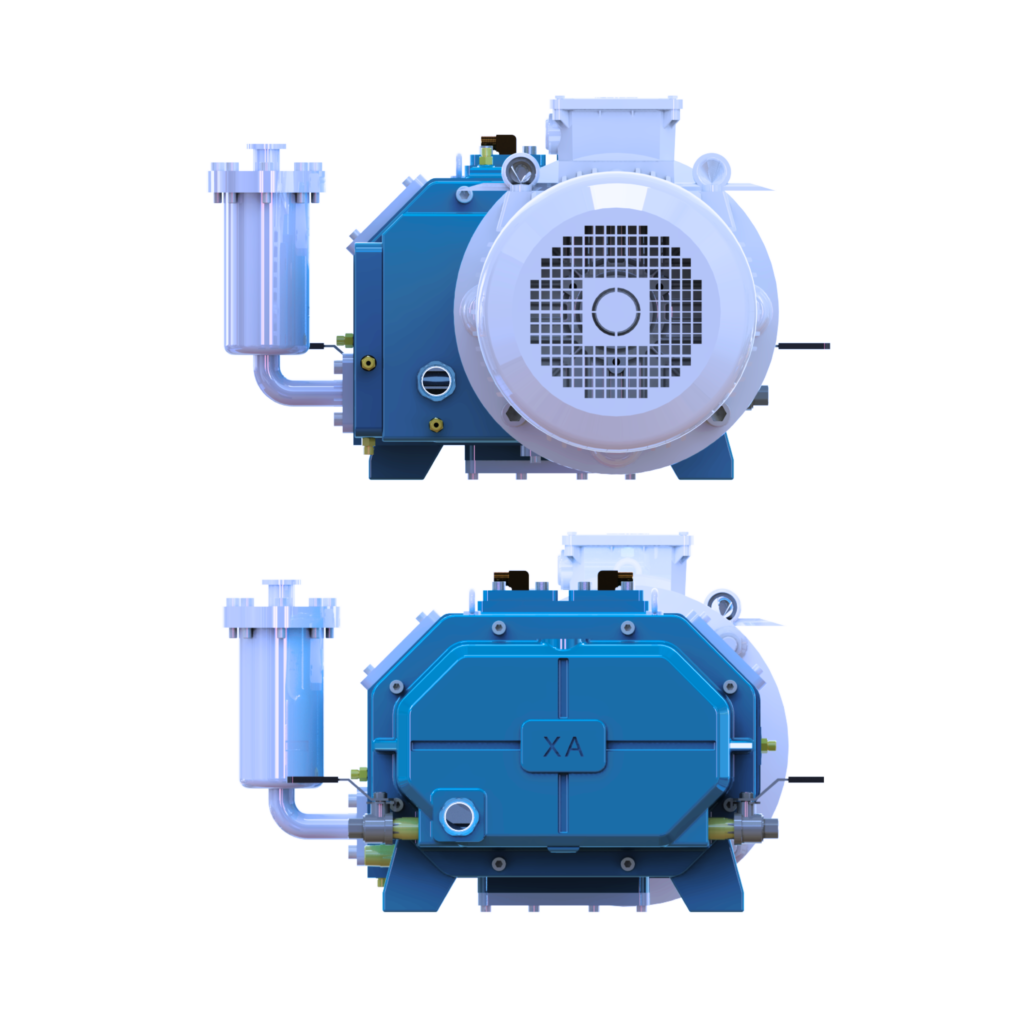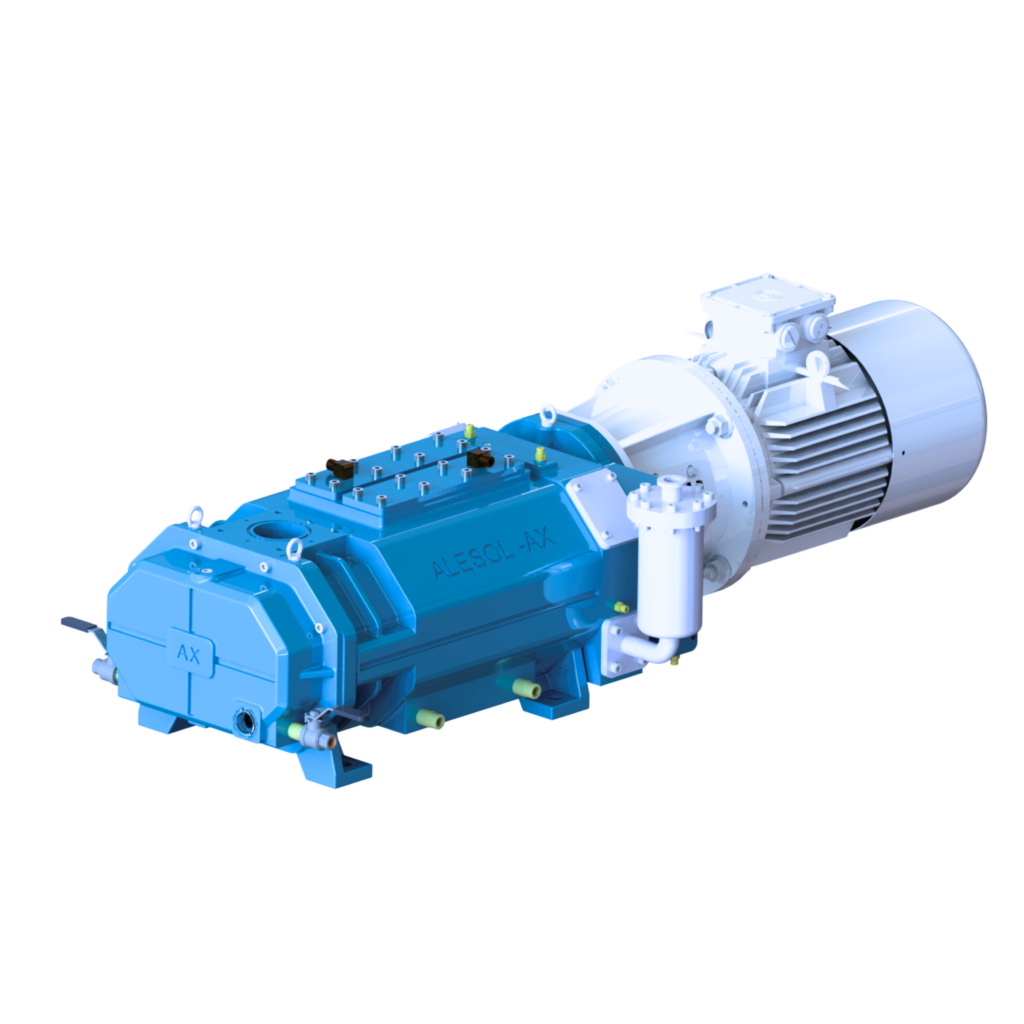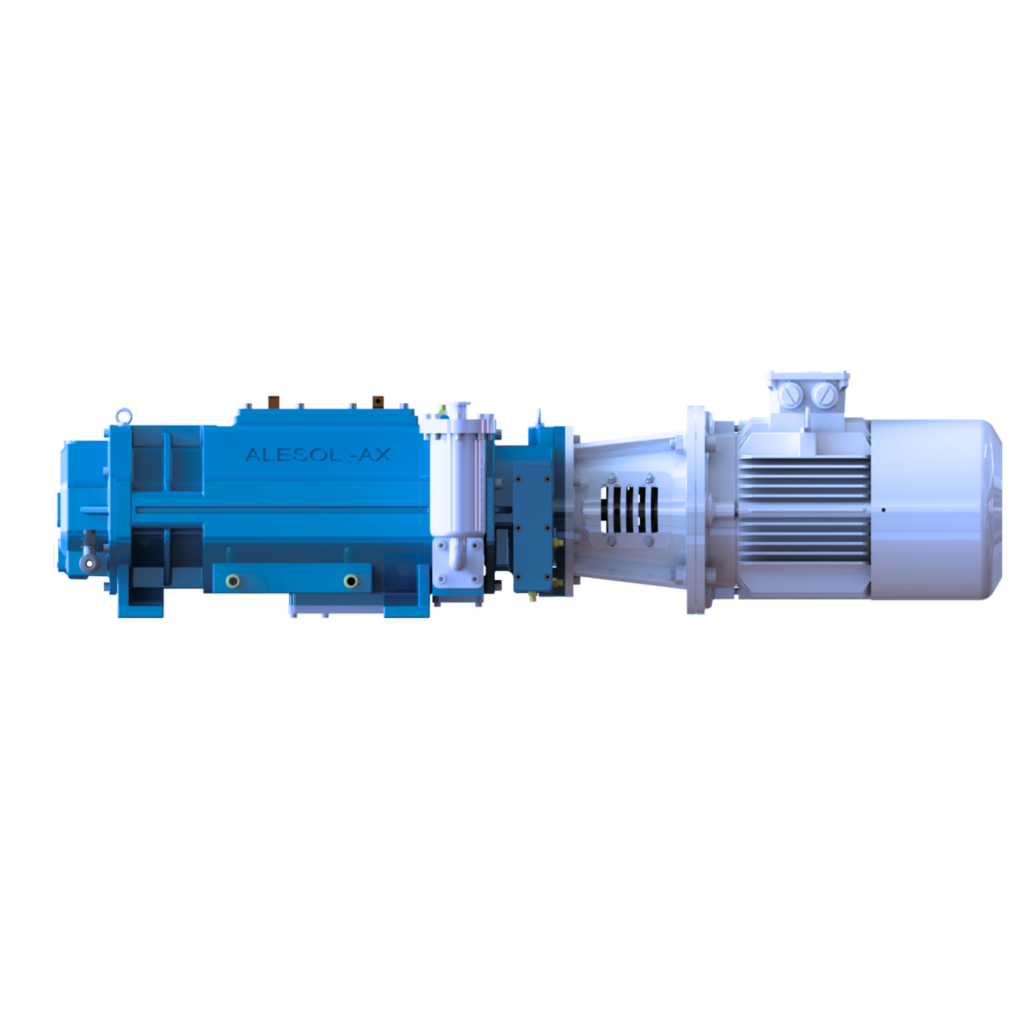


Industrial Dry Screw Vacuum Pumps
Specifically designed to tackle the tough contaminants found in demanding chemical, pharmaceutical, and other industrial environments, the Alesol AX single stage, direct propelled rotary screw dry vacuum pump range, which includes the AX 180, AX 330, and AX 450 models, offers both direct and indirect cooling options.
More efficient, with a higher Flow (M3/Hr.) to Kilowatt (kW) ratio and lower operating temperatures than other traditional dry screw vacuum pumps, are the innovative, integral, gradually variable pitch screw design found in the AX series vacuum pumps.
It also provides an optional purging system that is intended to dilute condensable and toxic process gasses, improving operational safety.
The Alesol AX Series offers flow rates ranging from 100 to 800 m3/hr and ultimate vacuum down to.005 mBar.
Able to function at any pressure, ranging from the ambient pressure to the maximum pressure.
Also provides a wide variety of custom vacuum systems in addition to BOOSTVAC Mechanical Vacuum Boosters for Flow Rate and Lower Ultimate Pressures.
Product Benefits
Technical Details
| Description | Unit | AX 180 | AX 330 | AX 450 | AX 800 | |||||
|---|---|---|---|---|---|---|---|---|---|---|
| 50HZ | 60HZ | 50HZ | 60HZ | 50HZ | 60HZ | 50HZ | 60HZ | |||
| Nominal Displacement Capacity | M3/Hr. | 150 | 180 | 270 | 330 | 360 | 430 | 660 | 800 | |
| Ultimate Pressure | Mbar | 0.1 | 0.1 | 0.05 | 0.05 | 0.05 | 0.05 | 0.1 | 0.1 | |
| Power Rating | Kw | 3.7 | 7.5 | 11 | 15 | |||||
| Rotational Speed | RPM | 2900 | 3500 | 2900 | 3500 | 2900 | 3500 | 2900 | 3500 | |
| Pump Connection | Inlet | NW 50 | ISO 63 | ISO 63 | ISO 100 | |||||
| Outlet | NW 40 | NW 40 | ISO 63 | ISO 63 | ||||||
| Cooling Water | Temperature | °C | 10 to 35 | 10 to 35 | 10 to 35 | 10 to 35 | ||||
| Connection | BSP | 3/8″ | 3/8″ | 3/8″ | 1/2″ | |||||
| Flow Rate | LPM | 5 to 8 | 8 to 10 | 10 to 12 | 12 to 18 | |||||
| Pressure | Kg/Cm2(g) | 1.5 to 2 | 1.5 to 2 | 1.5 to 2 | 1.5 to 2 | |||||
| Inlet Purge Gas | Flow Rate | LPM | 300 | 300 | 300 | 300 | ||||
| Pressure | Kg/Cm2(g) | 0.3 to 0.5 | 0.3 to 0.5 | 0.3 to 0.5 | 0.3 to 0.5 | |||||
| Seal Purge Gas | Flow Rate | LPM | 3 to 12 | 3 to 12 | 3 to 12 | 3 to 12 | ||||
| Pressure | Kg/Cm2(g) | 0.3 to 0.5 | 0.3 to 0.5 | 0.3 to 0.5 | 0.3 to 0.5 | |||||
| Noise Level | dB(A) | ≤ 78 | ≤ 78 | ≤ 78 | ≤ 78 | |||||
| Lubrication | Grade | Mobil SHC Rarus 1026 | Mobil SHC Rarus 1026 | Mobil SHC Rarus 1026 | Mobil SHC Rarus 1026 | |||||
| Quantity | Litres | 0.8 | 1.2 | 1.8 | 3 | |||||
| Weight | Bare Shaft | Kgs | 200 | 260 | 320 | 450 | ||||




